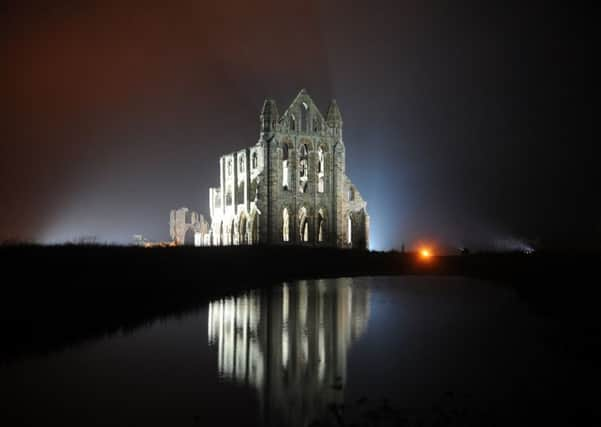Picture Post: Throwing light on Whitby’s ghostly abbey ruins


At any time of year, the 13th century Gothic ruins always have an atmospheric quality, but this year English Heritage decided to lend an even more ethereal quality to the places when it lit up the Abbey for Halloween.
The headland was first settled as a monastery in AD657 by King Oswy of Northumbria. It became one of the most important religious centres in the Anglo-Saxon world under the formidable Abbess Hild. She ruled over both men and women in a double monastery called Streaneshalch.
Advertisement
Hide AdAdvertisement
Hide AdLife continued uninterrupted at the abbey for centuries, but like many of the country’s religious houses it couldn’t survive the onslaught of Henry VIII.
Having broken away from the Catholic Church, the Dissolution of the Monasteries began and in 1540 it was Whitby Abbey’s turn to fall.
Though the abbey fell into ruin, it remained a prominent landmark for sailors, but it was far from the final chapter in its colourful history.
In December 1914, Whitby Abbey was shelled by German battlecruisers Von der Tann and Derfflinger, which were aiming for the signal post on the end of the headland. Scarborough and Hartlepool were also attacked in the same onslaught and while the shelling may have only lasted 10 minutes the damage was considerable.
Advertisement
Hide AdAdvertisement
Hide AdEventually the site was bought by English Heritage and it has become one of Yorkshire’s most popular visitor attractions and a place of pilgrimage for the many thousands who attend Whitby’s two Goth Weekends in April and October. The event, which marked its 21st anniversary this year, began in the back room of a Whitby pub. Fast forward to today and the festival not only has an international appeal but has also been a boon for the town’s economy.
Had Bram Stoker chosen another ruined abbey to set his gruesome tale in, it could have been a very different story for literature and for Whitby.
Nikon D3s, 17-55mm lens, 2 sec exposure at F5, ISO 800.